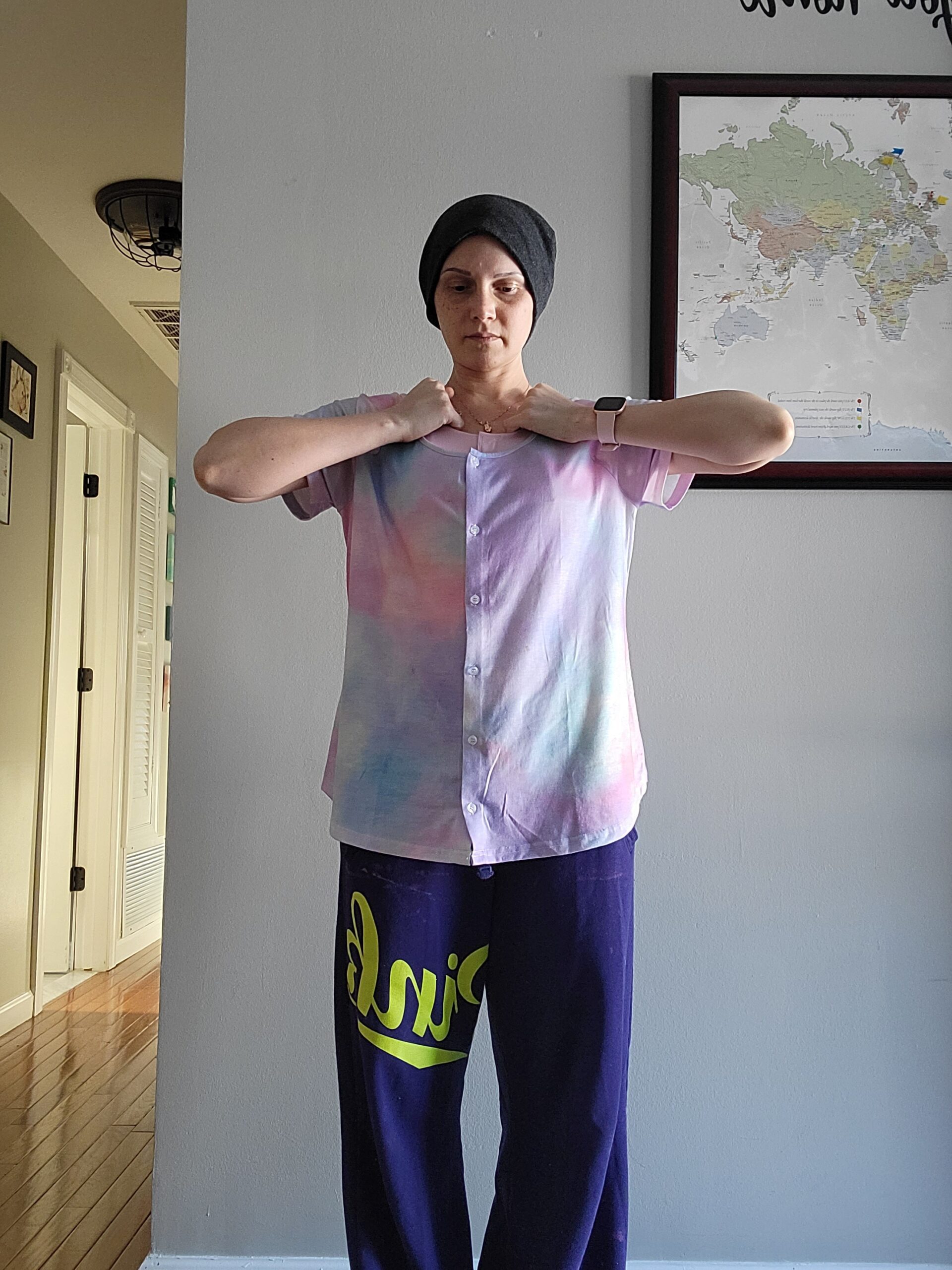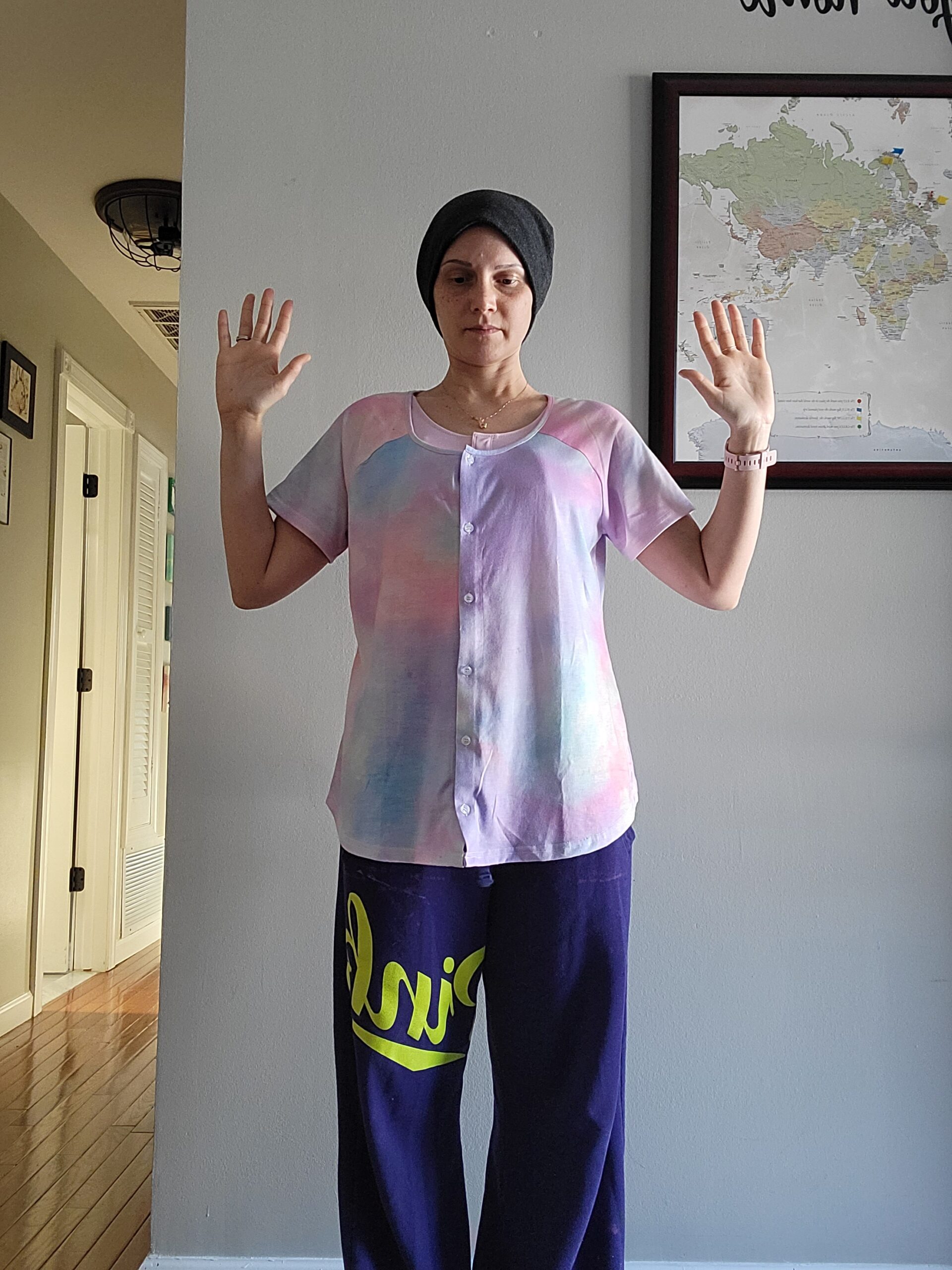Movement is Medicine
Maintaining physical activity during breast cancer treatment can be challenging, but incorporating gentle exercises into your routine can have numerous benefits for your overall well-being.
If you have been diagnosed with breast cancer, you may be wondering what exercises are safe for you to do. The good news is that there are many exercises that you can do at home without having to go to a gym!
Studies have shown that exercise can reduce the risk of breast cancer occurring in the first place, improve survival rates for those already diagnosed, and help patients cope with the side effects of treatment.
If you’re new to exercising, It’s important that you start slowly and gradually increase the intensity and duration of your workouts. It’s also important to talk to your medical team before starting any new exercise program, and encouraged that you work with someone who has an in-depth knowledge of how cancer and exercise can work hand in hand with one another.
So what are the top 5 exercises for breast cancer that you can do at home?
1. Walking
Walking is a great way to get your heart rate up and improve your overall fitness. It’s also a low-impact exercise, which means that it is gentle on your joints.
When I was in treatment, I used to do things that I called “House Laps” to get my cardio in, and it’s exactly how it sounds.
I’d wake up in bed and want nothing more than to lay there all day and sleep, but I know how important movement is during treatment, so I’d bait myself to get up and go to the bathroom just to wash my face and brush my teeth.
After feeling the cold water on my face I’d perk up a bit and then reward myself with a walk to the couch. Throughout the day I’d repeat this process until I was able to walk around every room in my house – including going up and downstairs to the different rooms on the different levels of my home.
Eventually I made it to the point I’d be able to venture outside to the mailbox, then onward for a short walk with my pups, and finally a nice long walk around the block!


2. Stretching
This is my favorite at-home exercise you can incorporate literally all day long. Incorporating stretching into your routine is a safe and effective way to improve flexibility and range of motion, which can help to reduce pain and stiffness, improve circulation, which can help to reduce fatigue, reduce stress and anxiety, improve sleep quality, help to manage the side effects of treatment, such as lymphedema, and improve overall well-being.
One of my favorite stretches I do all the time is door frame stretches. This stretch will help not only help you feel better, but also prepare you for surgery!
It’s important to start stretching slowly and gradually increase the intensity and duration of your stretches as you get more comfortable. If you feel any pain, stop the stretch immediately.
Stretching should cause some discomfort and tension – never pain!
3. Yoga
Just like stretching, yoga is a great way to improve flexibility, but it also helps improve your strength, and balance while simultaneously improving your stress and anxiety.
I never like yoga. Honestly, anytime a friend would ask to go with me I’d roll my eyes and reluctantly go. I hated every minute of it. Going through treatment though made that thought process to a complete 180.
Learning how to properly breathe and then apply that new learning to executing the different positions to really feel the impact of the exercise was a huge change in my exercise.
There are so many different types of yoga, and it’s important to find someone or a class that suits where you’re currently at with your physical activity levels.
If you’re looking for a few people or groups to try, I’ve got the answer for you!
4. Strength Training
Strength training helps to build muscle and improve bone health. This is important for people with breast cancer, as they’re at an increased risk of osteoporosis.
Now, you’re probably saying to yourself – but I need to go to a gym for that, I don’t have weights at home.
The fact is though, you can do strength training with all different options!
Weights like dumbbells are the obvious way when people think of strength training, but using resistance bands, or your own body weight is also a great way to get strength training into your routine.
If you’ve never really exercised before treatment, make sure to get acclimated to each movement. Low rep counts and/or light weights is what I recommend to those just starting out. Play around with what your arms, legs, abs can all do in different positions and don’t be afraid to use gravity to challenge yourself!





5. Balance Training
Something that definitely doesn’t need a gym that you can start to incorporate while at home is balance training!
Treatments during breast cancer can cause a side effect known as neuropathy and a way to help combat that is by training yourself to be more stable on your feet!
Not only will you be helping yourself to combat treatment side effects, but you’ll also reduce the risk of falls, prevent injury, improve coordination, and boost your confidence.
It’s VERY important that you start balance training slowly and gradually. Increase the difficulty of the exercises as you get stronger. It’s also important to talk to your doctor before starting any new exercise program, especially if you have any concerns about your balance.
Use your countertop, the back of a chair, or even a wall to help get you started with your balance training on the right foot!
Physical activity is an important part of a healthy lifestyle for everyone, but it’s especially important for anyone who’s been impacted by a breast cancer diagnosis. By following these tips, you can find safe and effective exercises that you can do at home to improve your overall health and well-being.
Always listen to your body and stop if you feel pain, talk to your medical team about any specific exercises that you’re unsure about.






